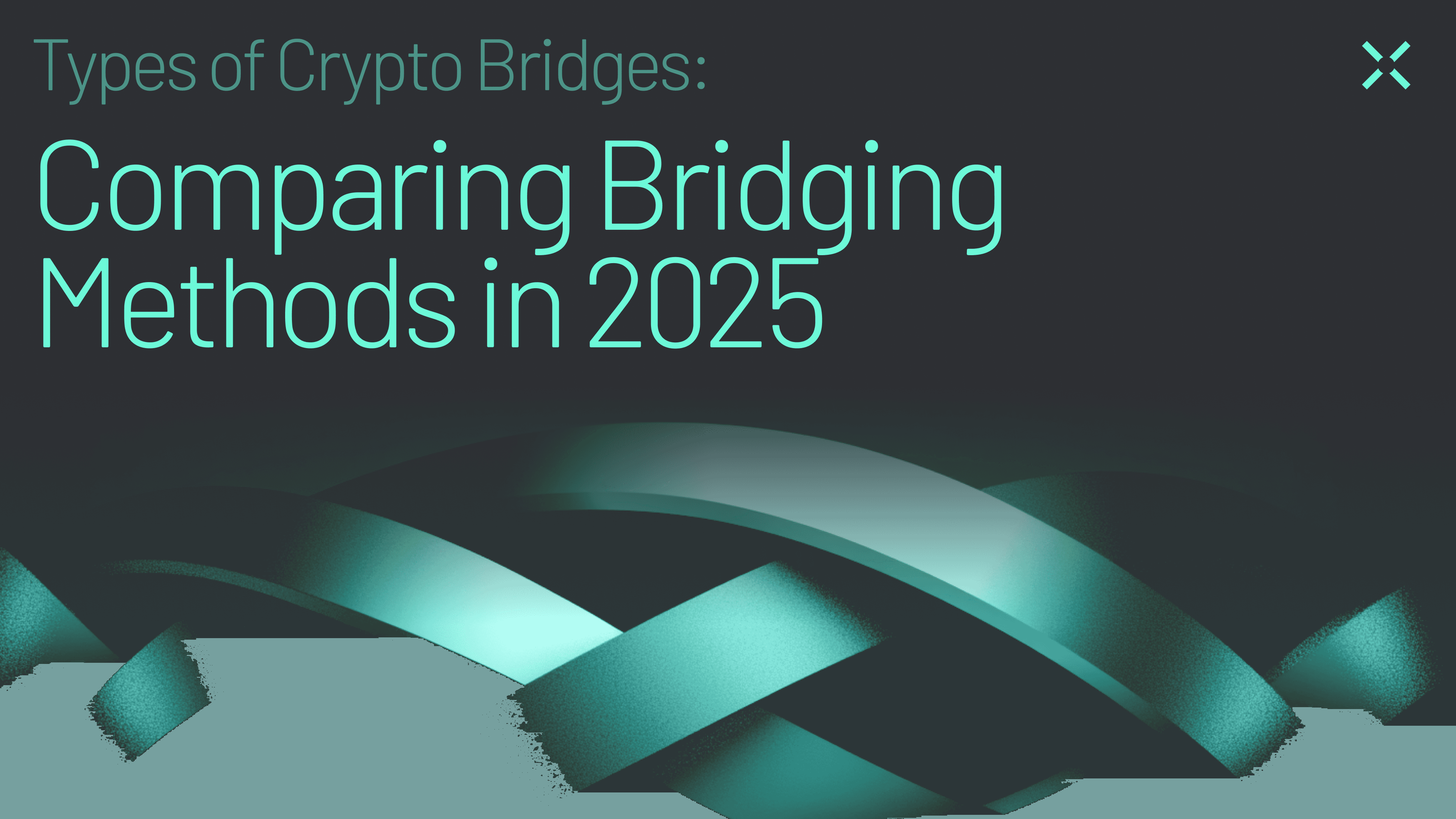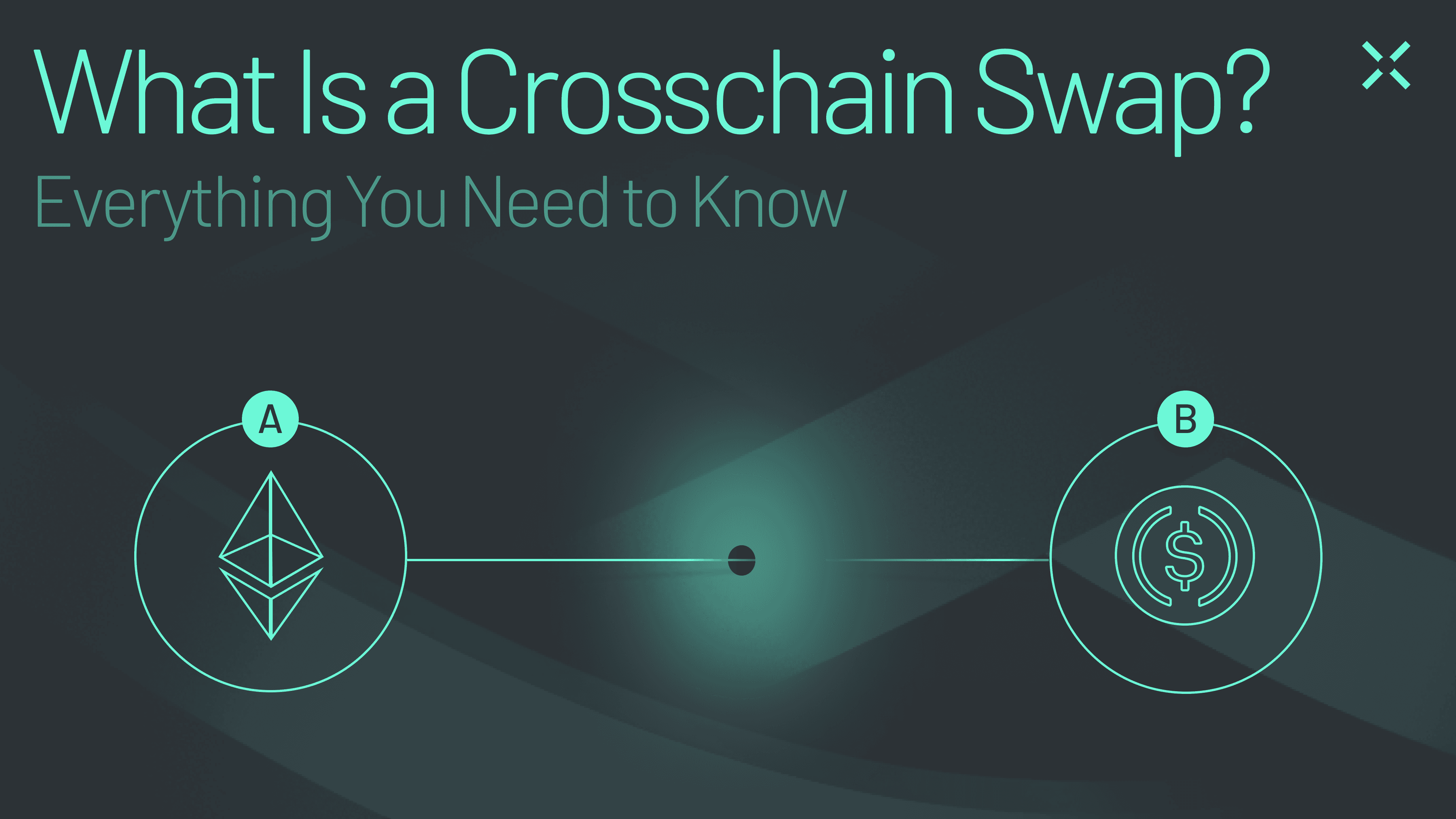Want to use your ETH on Arbitrum, but it's stuck on the Ethereum mainnet? Need to stake tokens on Optimism or trade on Base? Welcome to the reality of crypto in 2025: a multichain world where tokens worth billions of dollars move between different blockchains every day. But moving these assets isn't always straightforward.
Enter crypto bridges - the essential infrastructure connecting different blockchain networks. Just like physical bridges connect cities, blockchain bridges let assets flow between networks. But not all bridges are created equal - some are slow, others expensive, and some aren’t winning awards for security.
This guide explains everything you need to know about crosschain bridges: how they work, which types exist, what risks to watch for, and why innovations like Intents-based bridging are making crosschain transactions as seamless as they should be.
Whether you're new to bridging or looking to understand the technology better, you'll learn how to navigate the increasingly connected world of blockchain networks.
What Is a Crosschain Bridge?
A crosschain bridge is a protocol that enables users to transfer assets between otherwise isolated blockchain networks.
Similar to traditional real-life bridges, which were created to help people overcome natural barriers that couldn’t be crossed by roads alone, crosschain bridges act as connectors that enable users to move assets seamlessly between different blockchains.
Here’s a common reason you might need a crosschain bridge:
Problem: Your ETH is on Base, and you want to move it to Arbitrum. Without a crosschain bridge, you’d have two options:
Centralized Exchange (CEX): Send your ETH to a CEX, withdraw it to Arbitrum, and deal with KYC, withdrawal delays, and potential fees.
Canonical Bridge: Use the official bridge, but this process can take 7 days for withdrawals to Mainnet and an additional 20 minutes to Arbitrum.
Both options are time-consuming and cumbersome, especially when you need to move assets quickly.
Solution: With a crosschain bridge like Across, you can transfer your ETH directly from Base to Arbitrum in seconds without intermediaries or long waiting periods.
Sounds too good to be true?
Remember, not all bridges are built the same; this is exactly where Across comes into the mix.
In building a crosschain bridge with the strongest, fastest, and most secure functionality, Across has addressed—but solved—challenges of conventional bridging to give users the ideal experience when moving funds across different blockchain ecosystems.
It’s all due to the power of crosschain Intents, enabling Across users to circumnavigate the complexities of conventional crypto bridging.
Crosschain bridging on Across is as simple as stating your intent—like transferring your ETH from mainnet (source chain) to Base (destination chain)—and letting the network take care of the rest.
Why Crosschain Bridges Are Necessary in Web3
Crosschain bridges are essential for web3 because they enable users to fully explore the decentralized ecosystem by seamlessly moving assets between blockchains. Whether to access DeFi protocols, staking opportunities, NFTs, or the latest dApps, bridges enable interoperability so users (that’s you) can participate in the multichain multiverse.
But users want this to happen on their own terms and on the chains they want to use. This requires making interoperability easy, so you don’t have to reinvent the wheel (or have a near panic attack) every time you want to move funds across chains.
Also, users want options! Nobody wants to be confined to this chain or that chain. There’s simply too much opportunity out there, and you don’t want to miss out. Flexibility equals growth.
How Do Crosschain Bridges Work?
At their core, crosschain bridges work by taking an asset on one blockchain and making it available on another blockchain.
Think of sending 1 ETH from Ethereum to Base. A crypto bridge must ensure that your ETH is accounted for on both chains without accidentally creating extra tokens or losing your assets in the process (yikes).
For example, if the bridge accidentally creates extra tokens, it leads to unauthorized inflation that dilutes value for all users. Each existing token would become worth less as the total supply increases beyond what it should be. And if tokens are lost due to accounting errors, users have no recourse to recover their funds.
This delicate balance of token accounting is critical—even a tiny error in either direction can have serious consequences for users and the broader ecosystem. That’s why crypto bridges must maintain perfect 1:1 correspondence when transferring assets from one chain to another.
Bridges accomplish this through different mechanisms, each with its own tradeoffs in security, speed, and complexity.
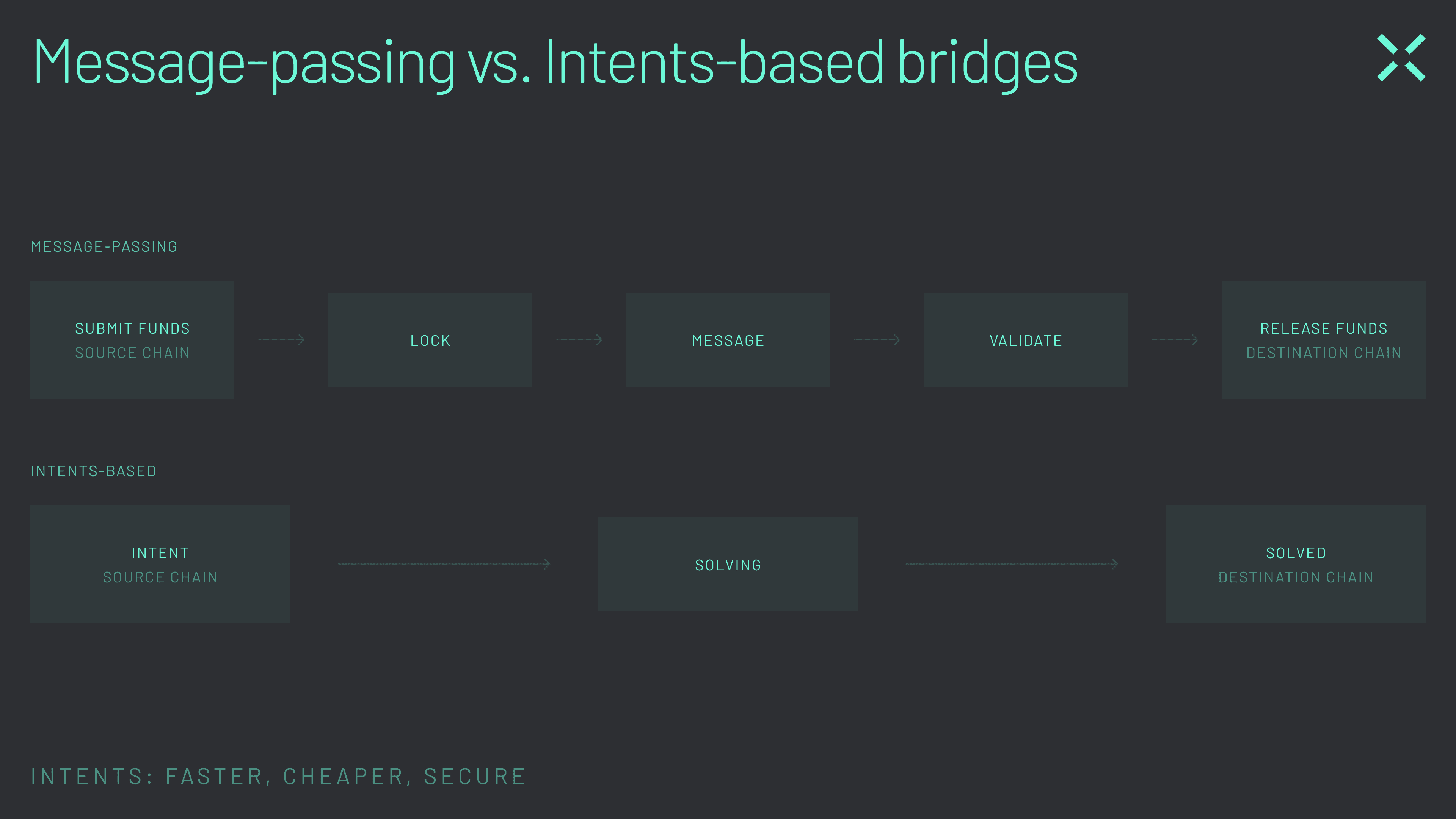
Users state their goals, and Intents handles the rest behind the scenes. It happens all in one place.
Message-Passing Bridges
Traditional crypto bridges require message-based systems to transfer assets or data between chains. There are two mechanisms you need to know:
Lock and Mint (Wrapped Assets)
Users lock assets on the source chain in a smart contract.
Equivalent “wrapped” tokens are minted on the destination chain (e.g., locking USDC on Chain A to mint wrapped USDC on Chain B).
To reverse the process, users burn the wrapped tokens on the destination chain to unlock the original assets on the source chain.
Example: Wormhole’s Portal uses lock-and-mint mechanics to facilitate transfers across numerous blockchains—often with wrapped assets like WETH or WBTC.
Burn and Mint
Instead of locking assets, tokens on the source chain are burned, and equivalent tokens are minted on the destination chain.
This method eliminates the need for locked assets but still relies on offchain communication for verification and execution.
Example: CCTP uses a burn-and-mint mechanism, where Circle burns platform-native tokens on the source chain to mint equivalent tokens on the destination chain.
Intents-Based Bridging
Intents are a new generation of bridging technology that simplifies how users move assets across chains. Unlike traditional bridges, which require understanding complex mechanics, Intents allow users to simply specify what they want to happen—the end result—rather than how it should happen.
Example: Across' crosschain Intents-based bridging architecture, which can be distilled into a 3-layered system:
A request for quote mechanism to house users' Intents.
A competitive network of relayers to bid, claim, and fill those orders.
A settlement layer to verify Intent fulfillment and repay relayers.
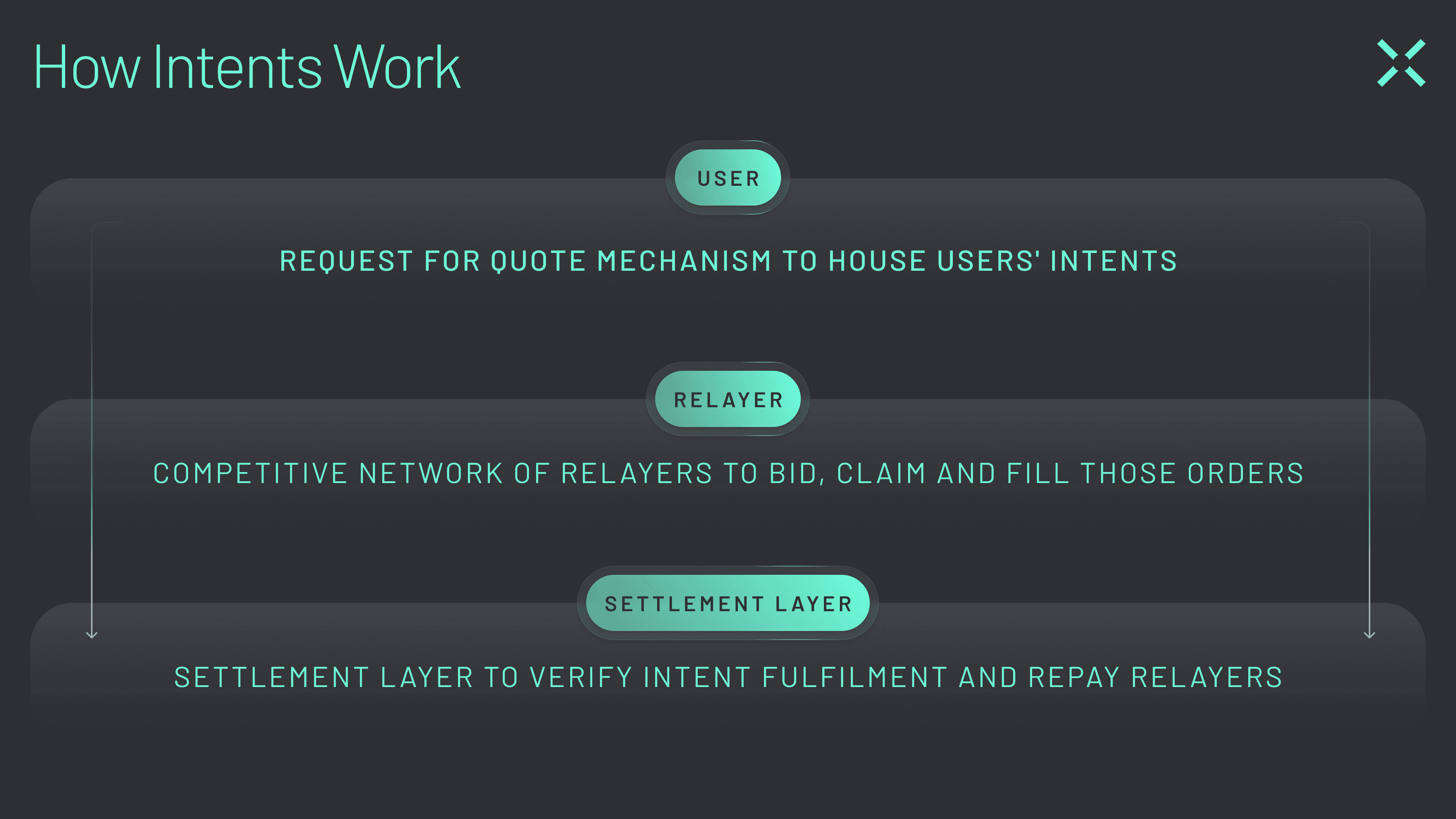
How Intents-based crypto bridging works
This approach differs from traditional bridging methods because it abstracts away technical complexity while maintaining security. Users don't need to understand the mechanics of locking, minting, or messaging - they just express their desired outcome, and the system handles the rest.
Want to learn more about how Intents are transforming crosschain transactions? Discover 1-Click Crosschain Actions
Liquidity Pool-Based Bridging (Lock and Unlock)
Some bridges maintain pre-funded liquidity pools of assets on multiple chains required for transfers.
When bridging, users deposit assets into a liquidity pool on the source chain and withdraw equivalent assets from a pool on the destination chain.
Liquidity providers are incentivized through staking rewards to keep pools adequately filled to enable seamless transactions.
Example: Stargate leverages unified liquidity pools to achieve finality.
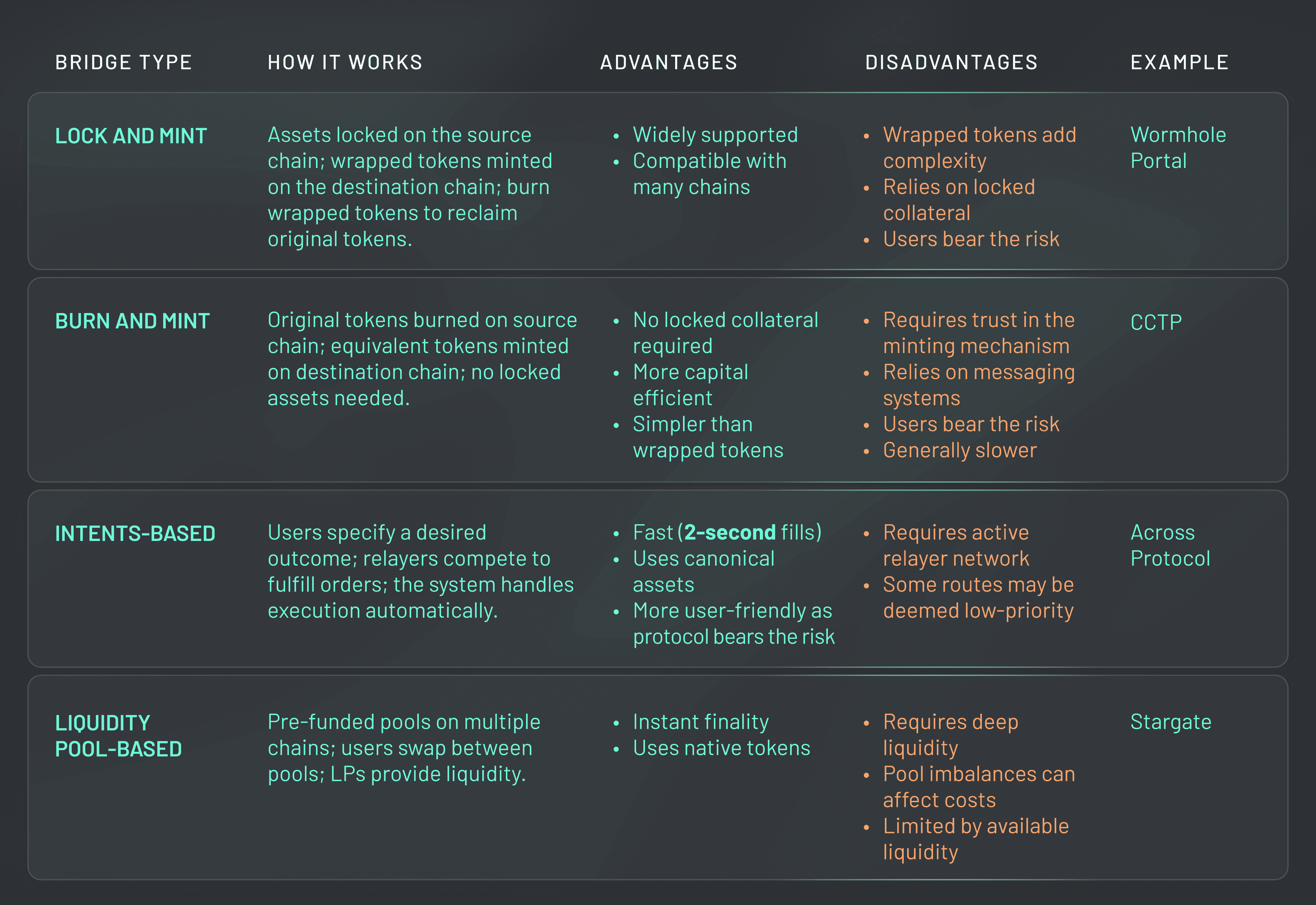
Crosschain bridges function through different mechanisms, each with its tradeoffs in security, speed, and complexity.
Custodial vs. Non-Custodial Bridges
You’ll encounter two types of bridges in cryptocurrency with different levels of crosschain functionality and tradeoffs: custodial and non-custodial bridges.
Custodial Bridges: These function similarly to centralized exchanges and are managed by a central authority. Users trust the bridge creators to manage the token conversion process securely. During the custodial bridging process, this central authority holds users' assets. Custodial bridges are more vulnerable to hacks, mismanagement, or regulatory issues. Examples include the WBTC (Bitgo) and Binance Bridge.
Non-Custodial Bridges: These function through decentralized protocols and are managed by smart contracts rather than central authorities. Users trust the bridge's smart contract code and underlying protocol to manage the token conversion process securely. During the non-custodial bridging process, user assets are held by smart contracts rather than intermediaries. Examples include Across and Wormhole.
The Challenges of Crosschain Bridging
As you've hopefully gathered by now, crosschain bridges are essential for navigating the multichain ecosystem. But they come with significant risks, particularly around security. In fact, bridge hacks account for some of the most prominent exploits in DeFi history.
Some notable examples highlight these risks:
February 2022: Wormhole Bridge suffered a $320 million exploit due to a smart contract vulnerability
March 2022: The Ronin Bridge hack saw attackers exploit private key vulnerabilities to steal over $624 million in ETH and USDC
August 2022: Nomad Bridge lost $190 million in a widespread exploit that began with a smart contract flaw
These incidents underscore a crucial reality: bridges are prime targets for attackers because they often hold large amounts of locked assets in smart contracts. Think of them as digital bank vaults - the more value they hold, the more attractive they become to potential attackers.
Of course, security is only one challenge of crosschain bridges. The full scope of challenges varies depending on the type of bridge and its unique trade-offs.
Custodial bridges are typically more user-friendly, with straightforward interfaces and more available customer support. However, they also present challenges around security and trust.
Security Risks: In the custodial bridge framework, assets are held by a third party, creating a potential single point of failure, a tempting target for bridge hackers, and bad news for users who may suffer financial losses.
Trust Requirements: Users must trust the bridge operator to secure their funds and operate fairly, which can be counterintuitive to those who consider trustlessness as essential to the decentralization ethos.
Non-custodial bridges utilize a decentralized approach that enhances transparency and security but can provide challenges for crypto newcomers. These bridges also have their potential security risks.
Smart Contract Risks: Vulnerabilities in the code of non-custodial bridges can still attract hackers and be exploited, leading to potential financial loss.
Complexity: This type of bridge may be less intuitive for newcomers due to decentralized processes and lack of support.
This complex landscape of challenges explains why building secure, efficient bridges is one of the most critical tasks in crypto today. It's also why innovations in bridging technology, particularly around security and user experience, are so important for the future of web3.
The Future of Crosschain Bridges
The future of crosschain bridges points toward complete abstraction - users shouldn't need to understand the complex mechanics happening behind the scenes, just like how we don't think about TCP/IP protocols when browsing the internet.
Here are just a couple of paths forward:
ERC-7683: The Standard for Unifying Ethereum
Smart contract standards exist to help simplify processes and unify crypto, getting everyone “on the same page,” so to speak. ERC-7683 is a perfect example of this innovation.
Together with Uniswap, Across developed a universal standard for crosschain Intents. By standardizing how crosschain Intents are expressed, ERC-7683 lays the foundation for seamless and efficient EVM interoperability: the key to unlocking a truly borderless Ethereum.
Similar to how HTTPS standardized secure internet browsing, ERC-7683 abstracts the technical complexity of crosschain operations, enabling dApps to access deeper liquidity, reduce transaction failures, and deliver faster, more user-friendly experiences. With support from over 50 protocols, ERC-7683 is paving the way for a unified Ethereum ecosystem where crosschain Intents drive collaboration.
1-Click Bridging for Seamless Transactions
Crypto transactions should be fast and easy. Agreed?
Until recently, this hasn't been the case, as crosschain transactions have continued to be plagued by complex steps, high fees, and user frustration. But Across is here to transform this, thanks to our 1-click bridging paradigm, inspired by web2 innovations like Amazon’s one-click checkout.
By consolidating multiple actions into a single step, Across simplifies crosschain interactions for a fast, seamless experience.
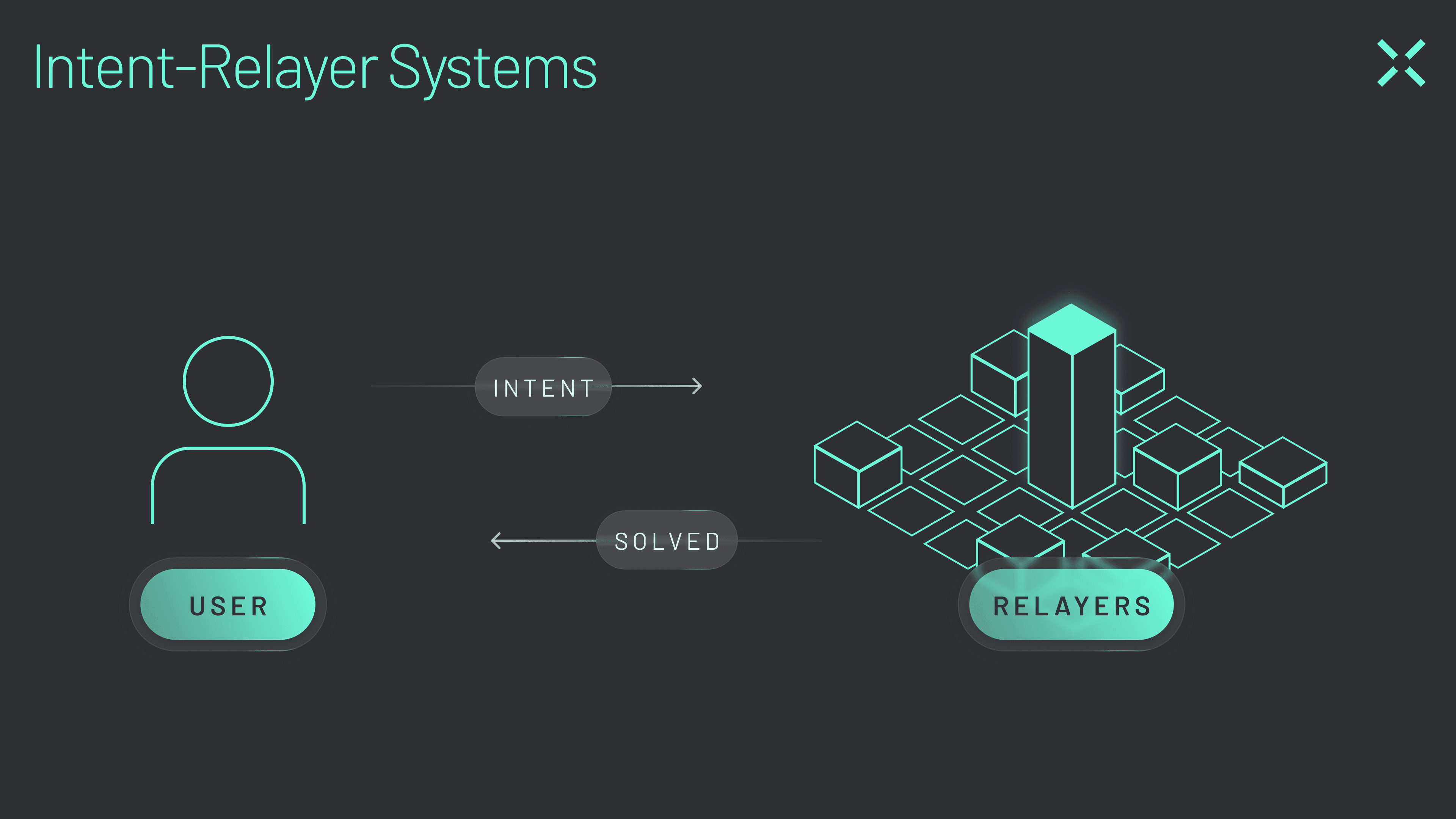
Intents abstract complexity away to significantly improve bridging UX
As a refresher, on Across, users specify their desired outcome—like bridging ETH from Ethereum to Base—and the protocol's Intent-based system handles the rest. Across automatically optimizes bridging routes, transfers assets, and manages smart contract interactions, all behind the scenes (or “under the hood,” as we say in web3).
With support for close to 20 (and counting) EVM-compatible chains, Across makes crosschain actions intuitive and accessible, empowering both users and developers to experience frictionless multichain interoperability.
The Future Takes Shape
These innovations point to a future where chain boundaries become invisible to users, and applications can seamlessly operate across multiple chains. Liquidity will become more efficient and accessible, while security will improve through standardization.
Most importantly, innovation will accelerate as developers spend less time solving basic interoperability challenges and more time building revolutionary applications.
The end goal? Making the multichain experience feel like using a single, unified blockchain - while maintaining all the benefits of a decentralized ecosystem. Just as the internet evolved from a complex network of protocols into the seamless experience we know today, crosschain interactions are evolving toward true invisibility. And with innovations like 1-click bridging and ERC-7683 leading the way, that future is closer than ever.
The Across Advantage
Bridging in web3 has long faced challenges like trust requirements, delays, and security risks, keeping users from fully embracing the quickly growing layer-based multichain ecosystem. Across exists to solve these issues with Intent-based bridging, prioritizing speed, security, and efficiency.
When it comes to speed, Across delivers. With a median fill time of just 2 seconds, users can move assets almost instantly between chains - no more waiting minutes or hours for transactions to complete. This lightning-fast performance doesn't come at the expense of security, either. By leveraging Intent-based bridging, Across maintains robust security while eliminating the complexity that often leads to user errors and lost funds.
For developers, Across provides the tools to integrate native crosschain functionality directly into their applications. This means dApps can offer users seamless crosschain experiences without managing complex bridging infrastructure. Through a simple integration, developers can tap into Across's proven architecture that has safely processed billions in transaction volume across multiple EVM-compatible chains.
Need further proof? Try Across here and see for yourself.

